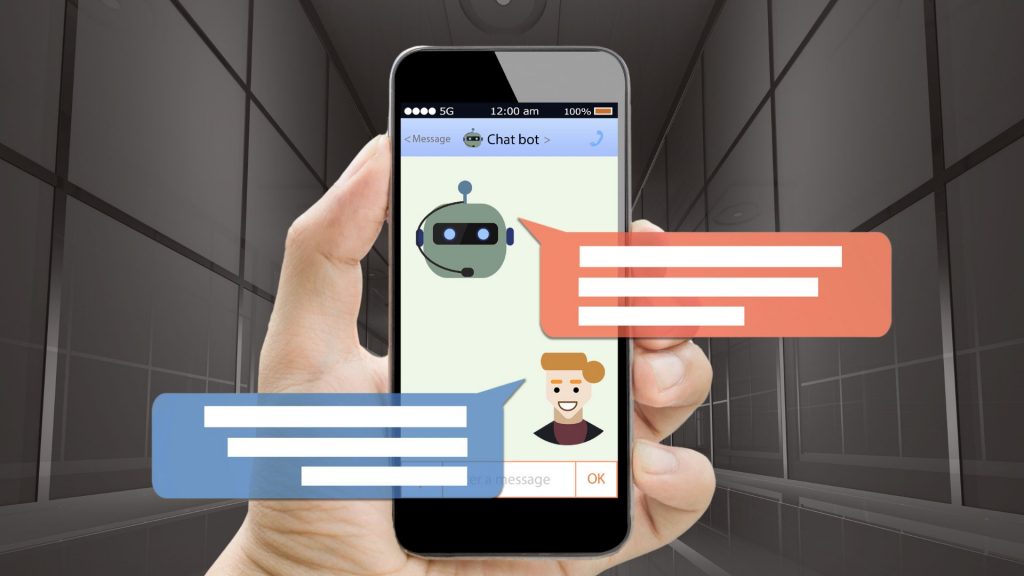The New York Times once published an article titled “The Robots are Coming for Phil in Accounting.” As the title suggests, it gives a deep review explaining the shift we’ve seen as the world adapts to the increased presence of Artificial Intelligence and the use of robots in every day life. The premise of the “robots coming” seems like a frightening future where automation completely replaces human labor.
In reality, though, automation by the way of robots (aka Robotic Process Automation) is less like a science fiction horror film and more like the adaptation of the assembly line. The goal of Robotic Process Automation (RPA) is not to completely unseat every employee, but to give them better tools to complete the parts of their job that keep them succeeding and allow them to enjoy their work.
What is RPA?
In technical terms, Robotic Process Automation is the technology that allows anyone in an organization to utilize a software robot (aka “robot” or “bot”) to replicate the actions of a person using digital business process software. RPA robots utilize the user interface to capture data and manipulate applications just like humans do. They interpret information, trigger responses, and communicate with other systems in order to perform a vast variety of repetitive, sometimes mundane tasks. The benefit of RPA is that it can complete these tasks without ever making a mistake or taking a sick day. And because these repetitive tasks are completed by a bot instead of an employee, your team can focus on activities that are more fulfilling and better suited to their skill sets and the needs of your organization.
What can RPA do?
Most digital, highly repetitive tasks that are completed by employees can be completed by Robotic Process Automation. When evaluating tasks for RPA to complete, organizations focus on the most time consuming “human completed” digital processes in their workflow or business process. For example, within an accounting workflow you can identify specific parts within the process that can be automated. These include opening emails, downloading invoices, extracting data from those invoices, and then inputting the data into your ERP or Financial software.
What else can RPA do?
- Log into applications
- Move files and folders
- Read and write to databases
- Connect to system APIs
- Copy and paste data
- Extract and process structured and
partially structured content from files - Open emails and attachments
- Scrape data from the web
- Make calculations
What are the benefits of RPA?
There are two ways to measure success with RPA. The first is through direct business benefits. Robotic Process Automation streamlines workflows, which makes your organization more profitable, flexible, and responsive. This success can be measured and you can quickly see the ROI once you implement your RPA solution.
The second isn’t a quantitative benefit, but can still be considered important: employee happiness. By eliminating mundane tasks for your employees, they become more productive, engaged, and overall better employees for your organization. If your employees are spending too much time on meaningless, rote tasks – they aren’t really working towards the success of your business. And most importantly, it’s making them bored, and maybe even frustrated. Many organizations realize that investing in their employees leads to positive long-term results and using a solution like RPA is a perfect way to do so.
From a technological perspective, RPA is a simple addition to supplement your existing systems. It is noninvasive and can quickly be implemented so you can begin to see its benefits right away. RPA is also ideal for automating workflows that involve legacy systems that lack features such as APIs (Application Programming Interface), Virtual Desktop Infrastructures (VDIs), or database access.
Robotic Process Automation is also scalable and flexible, allowing you to customize your solution to fit your exact needs as well as expand upon it within other areas of your business as you see the ROI of your solution. RPA doesn’t require custom coding and creation from scratch, meaning your IT team won’t be occupied and overwhelmed with the task of bot creation, rather you can quickly train the bots to do what you need them to do and begin using them right away.
The faster you take advantage of the potential of RPA, the better your business can become.
What is the ROI of RPA?
The benefits of RPA are clear just by seeing its potential, but there are direct benefits that can show the clear value of investing in a Robotic Process Automation solution. While many solutions can take years to show a return on investment, RPA is almost immediate.
Full Time Employee Equivalent
An obvious measure of the ROI of RPA is simply calculating the number of hours saved by investing in automation. Anecdotally, because PiF not only implements RPA but uses it as well, a manual data entry project that would have taken 2 full-time employees over a week to complete was completed within 2 days by the bot, leaving those employees free to complete higher-value tasks. That’s 80 hours of re-allocated time to higher value tasks for 2 full time employees.
Within your organization, this can look like either reallocating employees to complete other work, reducing the number of employees on a certain project, or not needing to hire additional employees to handle increased workload.
Hours Back
What would you do if you had more hours in the day? You definitely wouldn’t spend it doing even more data entry or menial tasks. With automation, you gain multiple hours back by simply not needing to complete redundant manual tasks. These hours can be spent completing meaningful work that supports organizational growth.
Best of all, bots work 24/7/365, meaning you can complete processes even when your offices are closed for the evening, weekend, or holidays. A standard workweek is 40 hours. There are 168 hours in a 7 day period. By using RPA you can extend the work week to 24/7 or get an additional 128 hours per week; equivalent to an additional 3 Full Time Employees.
Reduced Loss Due to Mistakes
A single typo can cost your organization hundreds or thousands of dollars. What happens when these mistakes occur with relative frequency due to simple human error? Even if mistakes are caught before it’s too late, you’re still losing time spent on checking and correcting errors.
RPA eliminates mistakes, meaning it also eliminates the need to check and correct. This can save your organization time and resources almost instantly.
Process Optimization
How long do common processes take your organization? By reducing the amount of time it takes to complete a process, you reduce the amount of input required while also being able to significantly increase volume!
Improved Business Agility
Your organization can’t be agile when your employees are bogged down with manual tasks. Innovation and expansion are hindered with outdated systems, by investing in Robotic Process Automation your employees have freed up time and flexibility to be ready to innovate and grow your organization. The clear ROI can be identified by reviewing how many new initiatives your organization takes on.
Business Continuity
After a year of business interruption due to COVID-19, business continuity is top of mind for business leaders. When you rely on people to complete tasks, you also are subjected to the variations and inconsistencies of how people work. Additionally, with variations and changes in staffing you lose time and continuity on projects due to employee gaps and time for training of new employees. What is the cost of downtime to your organization?
Employee Happiness
There may be no price you can put on employee happiness, but investing in your employees is important for the long term success of your organization. Burnt out and frustrated employees don’t work as hard and create a cycle of mediocre output. This can lead to high turnover, reduced work capacity, and more time spent correcting actions. Robotic Process Automation solves the frustration affiliated with menial tasks, and makes your employees happier.
How do I know if a process can be replaced by RPA?
While the possibility of RPA is exciting, it can be difficult to decide exactly what within your business can be transformed with this technology. As you begin your RPA decision-making process, take some time to look at your current situation and see where your biggest challenges are currently. The long-term success of your investment depends on identifying exactly where RPA will be implemented.
Finance & Accounting is a perfect option for investing in a Robotic Process Automation solution. With the evolving role of Finance within an organization, finance professionals now occupy seats in leadership positions and are poised to advise senior leadership with their extensive industry and technical knowledge. This opportunity presents a unique challenge for CFOs and those in similar roles, how can finance help drive the growth of the organization while managing increased volume and workload that’s associated with said growth?
By maintaining exhausted systems and outdated strategy, Finance and Accounting are left to manage multiple tasks manually, while needing to meet increased demand as a result of organizational growth. This causes hiccups organizationally, and can slow the growth of the business, all the while burning out crucial members of the organization.
In Finance & Accounting there are entry points that are well-suited for digital transformation by way of Robotic Process Automation.
Procure to Pay
- Purchase order entry and delivery
- Vendor verification and setup
- Vendor master-data management
- Vendor queries/helpdesk
- Invoice receipt and classification
- Invoice data extraction
- Invoice data entry and interface
- Two and three-way purchase order/invoice/receipt matching
- Non-purchase-order invoice coding
- Vendor statement reconciliation
- Accounts payable accrual journal entry
- Expense compliance audit
- Payment processing
Accounts Receivable
- Sales order entry
- Customer data set up
- Customer data management Billing/invoicing
- Collection activities (dunning) Cash application
- Credit risk management
- Dispute verification and resolution
- Chargeback management
Tax, Treasury, & Compliance
- Data aggregation for tax liability
- Convert data to tax basis
- Complete tax return workbooks
- Prepare tax returns
- File tax returns and payments
- Tax accounting entries
General Accounting
- General ledger and subledger reconciliations
- Bank reconciliations
- Inter-company reconciliations
- Manual journal entries
- Reclassification journal entries
- Fixed asset accounting
- Inter-company settlements
- Financial close activities
Financial Planning, Anlaysis, & Reporting
- Data aggregation for reports Report preparation (including the below)
- Trial balance and balance sheet
- Profit and loss
- Cashflow
- Variance analysis
- Management reports
- Statutory/regulatory reports
The benefit of Robotic Process Automation is that it isn’t built to exist in a vacuum, meaning that essentially any manual process within any part of an organization has the potential to be entirely transformed with the power of RPA.
Reviewing your current processes and identifying these key markers can be indicative of a need for automation:
- High in volume and repetitive
- Rule-based decision making
- Documented and predictable
- Low likelihood of variation
- High ROI potential (think the work of at least 2 full-time employees)
- Not subject to frequent changes
- Triggered by standard and readable electronic inputs
While these markers are the most common for processes needing transformation through automation, they aren’t the only indicators of a need. If you are unsure on whether or not a process can endure digital transformation, PiF is happy to help by providing a more in-depth analysis of your current state.
How do I get started implementing RPA?
Once you’ve identified what processes you want to replace with Robotic Process Automation, the next step is to work with an RPA implementation expert like PiF Technologies. We’ll walk you through exactly how you will go about implementing your solution and will provide you with the tools and next steps to make an informed decision. Get started on your RPA journey by clicking the button below and having a conversation with us!







